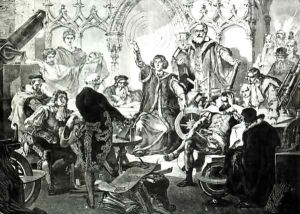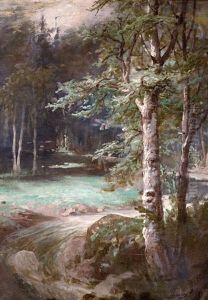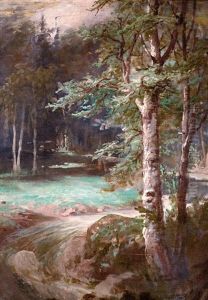Elviro Michael Andriolli Paintings
Elviro Michael Andriolli was an Italian-Polish painter, illustrator, and engraver born on November 2, 1836, in Nesvizh, which at the time was part of the Russian Empire and is now in Belarus. He is primarily known for his works related to Polish history, literature, and national identity, which were particularly influential in the period of partitions when Poland was divided between Russia, Prussia, and Austria.
Andriolli's early life was marked by his education at the Institute of Mining in Kremnitz, now known as Banská Štiavnica in Slovakia. He started his artistic education at the St. Petersburg Academy of Arts, where he studied painting. His talent was recognized early on, and he was awarded a gold medal for his work. After completing his studies in St. Petersburg, Andriolli traveled extensively throughout Europe, studying and working in various artistic centers, including Rome and Paris, which were pivotal in shaping his artistic style and philosophy.
Andriolli's works were deeply intertwined with the Polish national revival movement. He was committed to the cause of Polish independence and often used his art as a means of cultural and political expression. His illustrations for the epic poem 'Pan Tadeusz' by Adam Mickiewicz are among his most famous works and are considered iconic in Polish literary culture. Andriolli also illustrated other significant works of Polish literature and contributed to the design of various publications, becoming a prominent figure in the Polish art scene.
In addition to illustration, Andriolli's oeuvre includes oil paintings, sketches, and engravings. His subjects often featured historical scenes, landscapes, and depictions of peasant life, reflecting his interest in the folklore and traditions of Poland. Despite his Italian roots, Andriolli became a key figure in the Polish art world, and his legacy is tightly woven into the fabric of Polish national consciousness.
Elviro Michael Andriolli died on August 17, 1893, in Nałęczów, Poland. His death marked the loss of a significant contributor to the Polish arts and the movement for national identity. Today, his works are preserved in numerous galleries and collections in Poland and serve as a testament to his talent and dedication to the Polish cause.


